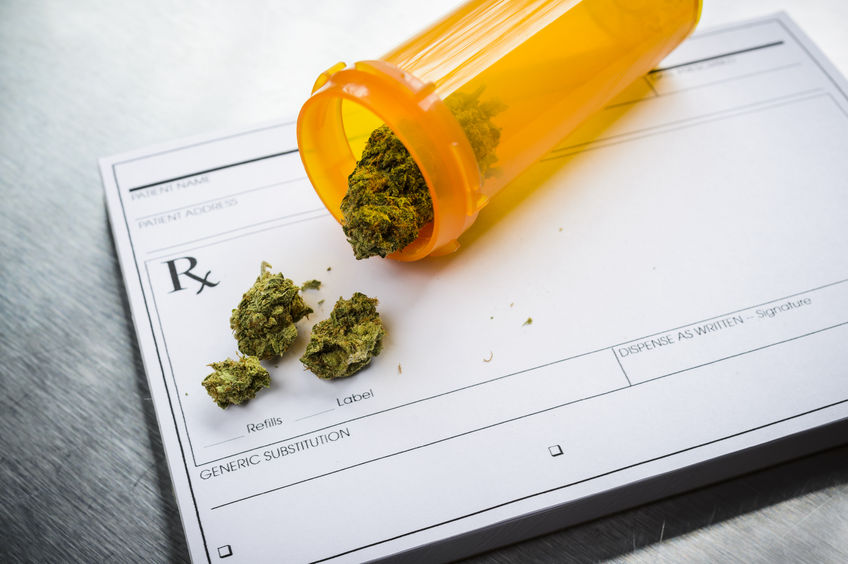In 1969, only 12% of Americans supported the legalization of marijuana. Fast forward to the most recent Gallup poll, and a striking 58% of Americans back legalizing cannabis, the first time the majority of Americans polled have responded favorably. There is no doubt that the debate over medical marijuana has heightened public awareness and played a role in shifting sentiment, but the issues surrounding medical cannabis remain complex.
For employers tasked with formulating best practice employee relations policies, there is a web of federal, state and municipal regulations to untangle. Then there are questions of disability coverage and workplace safety. In an environment where the public debate on medical marijuana rages on, here are 5 HR must-knows for a compliant employee relations policy.
1. Medical marijuana is a prescription drug
Medical marijuana or cannabis is a general term which refers to marijuana that is prescribed for bona fide medical reasons. Patients in need of medical marijuana register and in some states receive an ID card. With this registration, they can purchase, use or sometimes grow cannabis. According to WebMD, some of the conditions which may lead to the prescription of medical cannabis include muscle spasms, weight loss from chronic illness, seizure disorders and Crohn’s disease.
There are 5 major cannabinoids in marijuana, some of which can relieve pain but also trigger physical and psychological side effects. Medical cannabis is grown and bred with differing levels of cannabinoids to address various medical conditions. Delta-9-tetrahydrocannabinol or THC is the most well-known cannabinoid, and certain types of cannabis, Charlotte’s Web for example, have very low amounts of THC yet are highly effective in reducing seizures. Another cannabinoid, cannabidiol or CBD, actually mitigates some of the psychological effects of marijuana.
For employers, it is important to know that medical cannabis is a prescription drug. An employee using medical marijuana should be able to produce the prescription outlining dosage, how the cannabis is to be administered and how long it will be used.
2. Under federal law, marijuana is an illegal substance
There is a disconnect between state and federal laws on cannabis, and technically federal law prevails. There are 23 states plus the District of Columbia (DC) that have legalized medical marijuana. Four of those states plus DC have legalized the recreational use of marijuana as well.
At the federal level, marijuana is illegal and classified as a Schedule I Controlled Substance under the Controlled Substances Act of 1970. By the Drug Enforcement Agency (DEA) definition, Substances in this schedule have no currently accepted medical use in the United States, a lack of accepted safety for use under medical supervision, and a high potential for abuse.
Although federal law prevails over state law, the position of the outgoing U.S. Attorney General, Eric Holder, has been:
It will not be a priority to use federal resources to prosecute patients with serious illnesses or their caregivers who are complying with state laws on medical marijuana, but we will not tolerate drug traffickers who hide behind claims of compliance with state law to mask activities that are clearly illegal.
For employers, it is critical to understand that unless the classification of cannabis as a Schedule I Controlled Substance is successfully changed, the reality is that marijuana is an illegal substance. Federal authorities can choose not to prosecute or pursue someone for growing or using medical cannabis, but under current law, they have every right to do so, regardless of state laws.
3. Employers can fire an employee for off-duty use of medical marijuana
Because marijuana is an illegal substance under federal law, an employee that tests positive for cannabis, even if it was used off-duty, can be fired. In Coats v. Dish Network, Brandon Coats, a quadriplegic and resident of Colorado, had a medical marijuana card and utilized cannabis to control leg spasms that resulted from a terrible car accident. After a random company drug test in 2010 in which Coats tested positive for marijuana, he was fired by Dish Network. Last week, the Colorado Supreme Court upheld the employer’s right to fire Coats in a 6-0 decision.
The disconnect in state and federal law on medical marijuana was cited in the Court’s opinion, and Justice Eid confirmed, “…an activity such as medical marijuana use that is unlawful under federal law is not a “lawful” activity under section 24-34-402.5” which prohibits an employer from firing an employee engaging in a lawful activity off premises during nonworking hours.
For employers, if an employee tests positive for marijuana, even if it is prescribed medical marijuana, via a company’s compliant drug testing program, the person’s employment can be terminated. The drug testing policies should be put in writing and distributed to employees, and the program must also comply with relevant state regulations such as those defining whether there is reasonable suspicion of employee drug use. For a state by state compilation of drug testing laws, see this excellent NOLO guide, State Laws on Drug Testing.
4. Employee use of medical marijuana is not protected under the ADA
The Americans with Disabilities Act (ADA) guarantees equal opportunity for individuals with disabilities in employment. Is it possible that someone that was prescribed medical marijuana for a health condition could qualify as being disabled? Once again, it comes down to marijuana’s classification as a Schedule I Controlled Substance; and therefore, one with no acceptable medical use. In spite of state laws that may permit medical cannabis, under federal law, it is illegal to prescribe it.
In fact, the ADA makes it clear that the abuse of illegal substances is not a disability nor is it exempt from the restrictions inherent in the ADA. There is no exception if the illegal substance is prescribed. Therefore, for employers, there is currently no obligation to accommodate employees using medical marijuana.
5. Impairment from the use of medical marijuana is a workplace safety issue
The most recent American College of Occupational and Environmental Medicine (ACOEM) guidelines reiterate an employer’s obligation to protect worker safety. An employee under the influence of medical marijuana is impaired and can pose a risk to co-workers. Also worth knowing, a recent Pew study published in the Journal of Occupational and Environmental Medicine noted that an employee’s impairment can continue weeks after marijuana use has ceased.
Some companies are considering medical marijuana policies in the context of the employee’s role. So even if two different employees use medical marijuana, the one that drives a company vehicle and poses more risk if impaired may be viewed differently than one that works in the mailroom. On one end of the spectrum, companies have chosen a zero tolerance route and actively use drug testing; while on the other end, organizations have gravitated towards working within more flexible individual state guidelines.
For employers, the growing public acceptance of medical marijuana does not alter a company’s obligation to provide a safe workplace. The effects and impairment levels from medical cannabis are not conclusive and actively being studied, so worker safety policies must err on the side of caution.
In an environment where state regulations, federal laws and public sentiment are not moving in tandem, the challenges of fashioning HR policies that encompass medical marijuana are significant. Any organizational policy will end up being a myriad of rules. Best practice employee relations demands a sound understanding of the laws, medical facts and a company’s obligation to provide a safe environment for all employees. The learning curve on this issue is steep, which is all the more reason to tackle it knowing that HR policy will evolve alongside the changing legal landscape.




